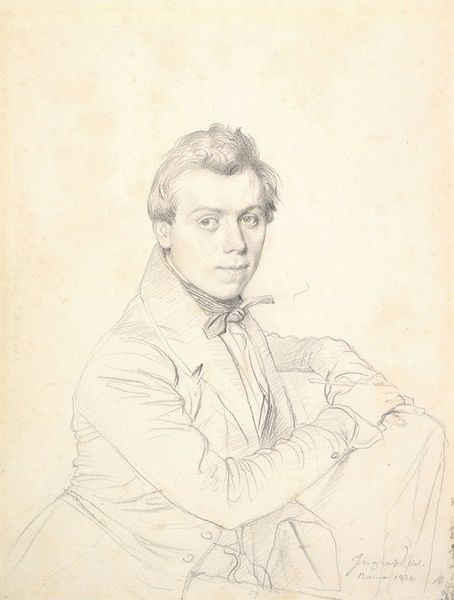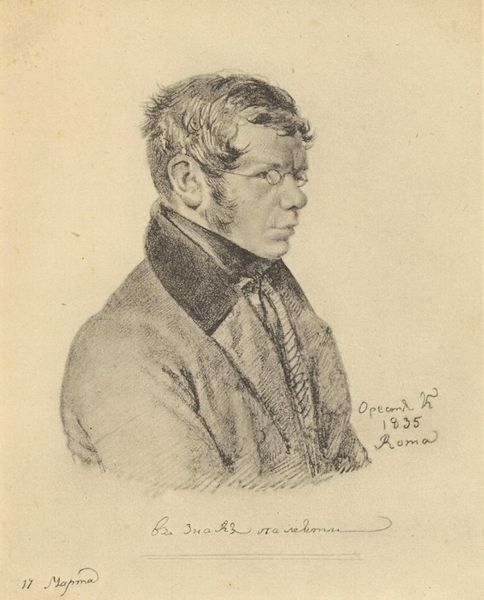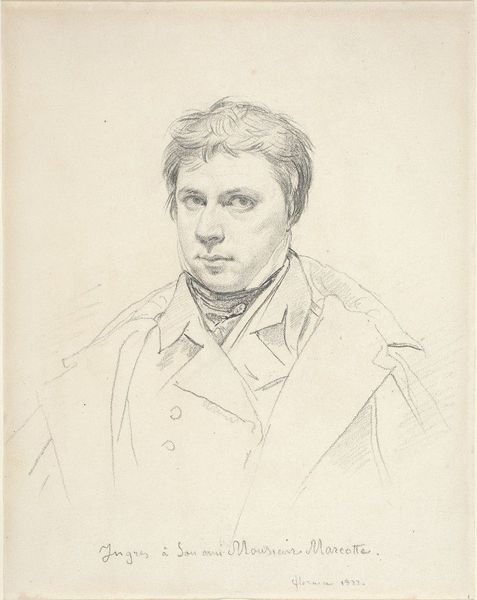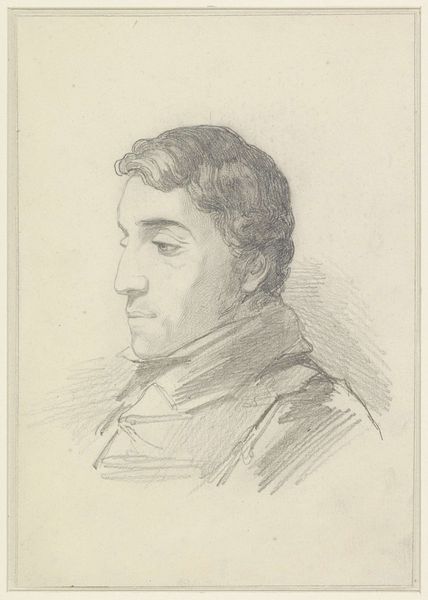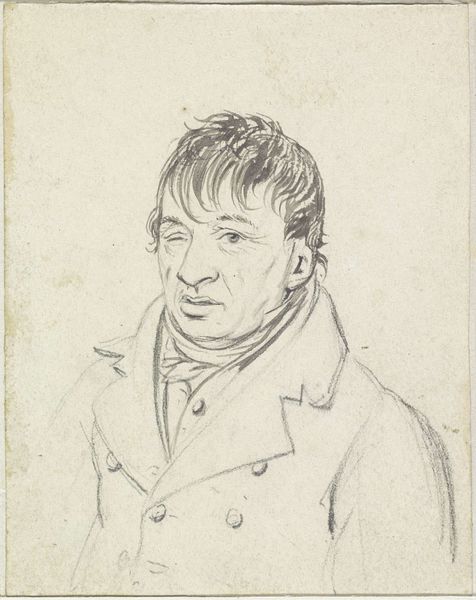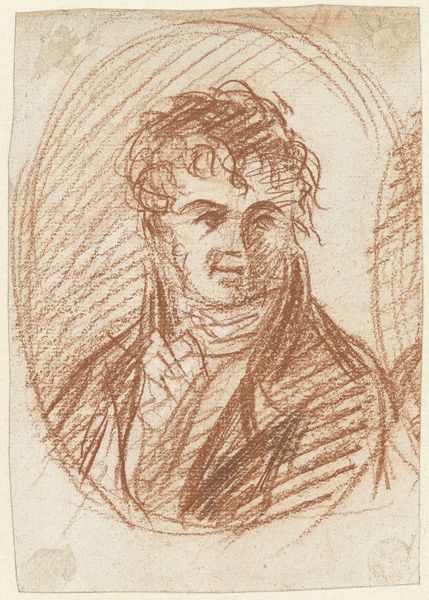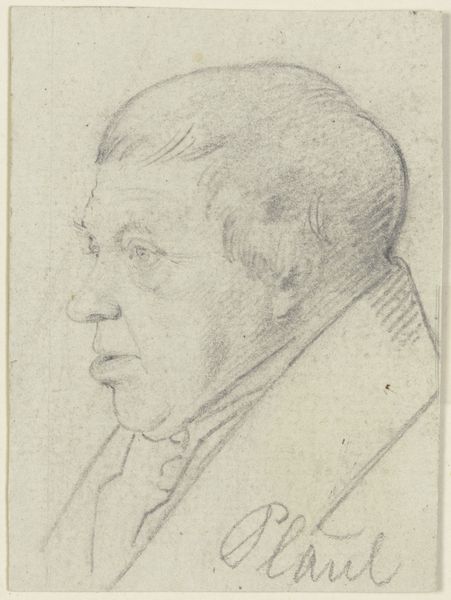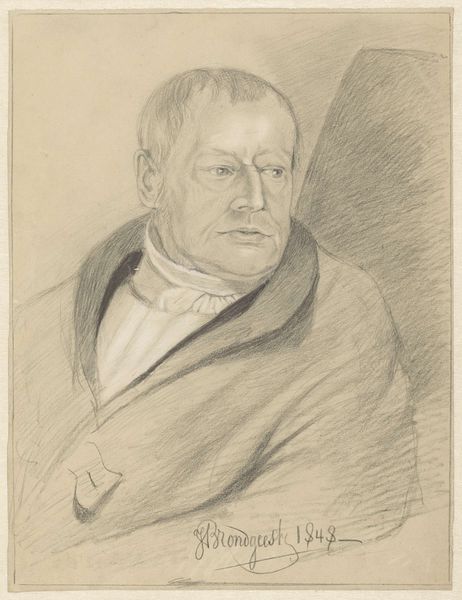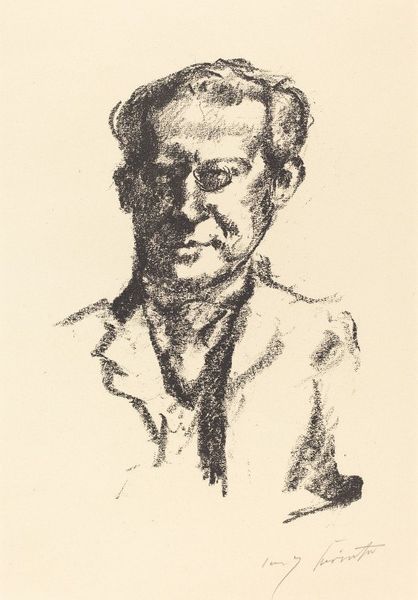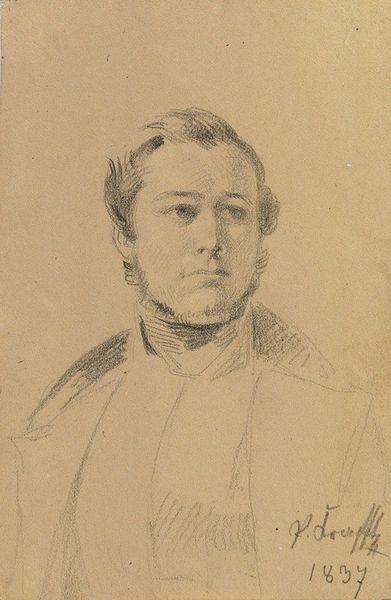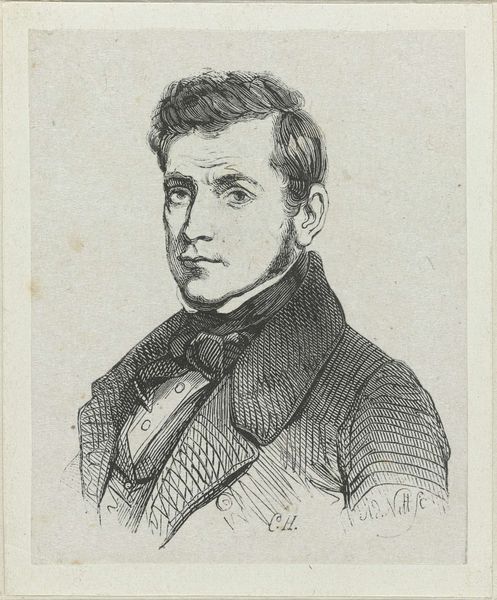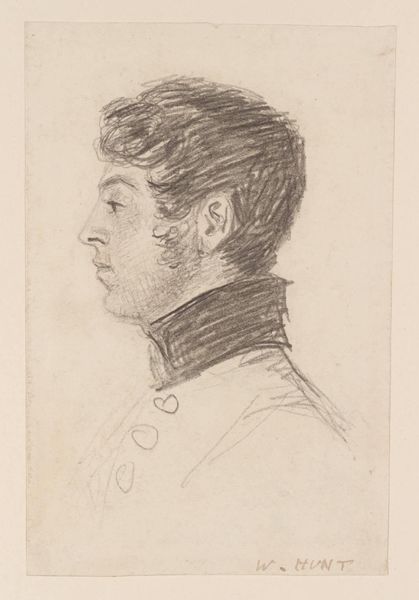
drawing, pencil
#
portrait
#
drawing
#
pencil drawing
#
romanticism
#
pencil
#
portrait drawing
#
realism
Dimensions: height 154 mm, width 114 mm
Copyright: Rijks Museum: Open Domain
Curator: Before us hangs Eugène Verboeckhoven’s self-portrait, likely made sometime between 1808 and 1881. Editor: There’s a remarkable directness in his gaze. The piece feels intensely personal, yet somewhat melancholic, rendered entirely in pencil, correct? Curator: Indeed, the artist favored pencil to capture his likeness in this Romantic era portrait. Observe the deliberate and precise shading techniques he used. Notice how the pencil work models the form. The contrast around the face, for instance, provides a sense of sculptural form to the cheeks. Editor: It's intriguing how the lack of color forces us to focus on structure, the line work around the brow communicating so much about lived experience. It begs the question, what did it mean for an artist like Verboeckhoven to present himself with such unwavering candor? How might he have been situated within artistic and social circles during this period? Curator: He certainly was trying to situate himself, to assert an artistic identity. Note how he uses chiaroscuro to direct our eyes—the stark contrast is there not just to build form but to present the face, the locus of expression, to his audience. Editor: And expression tied closely to class and power, of course. Self-portraits are never simply about 'the self.' Curator: Precisely. Though simple, there is much intensity in the drawing's form, his piercing eyes contrasted against the stark white paper that makes up the ground. Editor: Perhaps the sparseness enhances the sense of isolation or interiority...a study of the self divorced from a richer setting that might dilute this rather stark sense of presence. The work does a wonderful job of embodying Romantic era aesthetics, of interiority, expression, the power of a single actor. Curator: Looking at the interplay of light and shadow here, at Verboeckhoven's meticulous layering of graphite, I would agree that this small portrait holds great formal power. Editor: An invitation to consider not only the artist, but also the broader landscape of nineteenth-century European portraiture and self-regard.
Comments
No comments
Be the first to comment and join the conversation on the ultimate creative platform.
